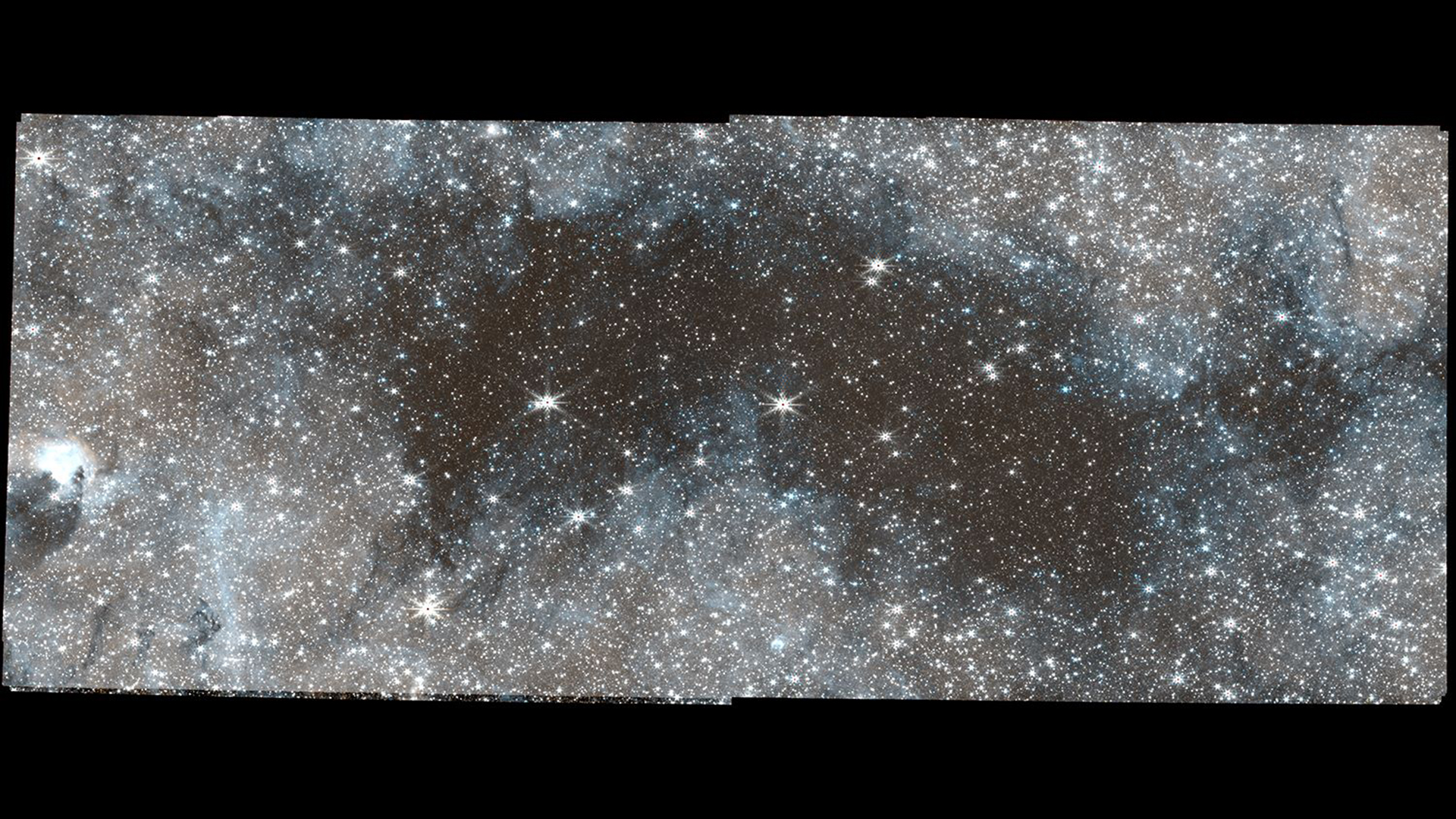James Webb telescope discovers dark secret of 'The Brick,' a gas cloud flipping assumptions about how stars are born
Peering deep into 'The Brick,' a dark, chaotic gas cloud at the heart of the Milky Way, the James Webb Space Telescope uncovered secrets that could shake up theories of star formation.

Astronomers using the James Webb Space Telescope (JWST) have peered deep into "The Brick," a dark, dense region near the heart of the Milky Way, revealing what appears to be a paradox: It's simultaneously warm and icy. The discovery could shake up our theories of star formation.
The Brick, officially known as G0.253+0.016 is a rectangular shaped, turbulent, near-opaque cloud of gas with a mass equivalent to around 100,000 suns in an estimated length of around 50 light-years and width of around 20 light-years, making it incredibly dense. Part of a complex of gas called the Central Molecular Zone, which is 1,000 to 2,000 light-years wide, the Brick has long fascinated astronomers because, despite being replete with cool, dense gas — the building blocks of stars — stellar birth is unexpectedly low in the region.
Now, the infrared observing power of JWST has shown that The Brick is rich in frozen carbon monoxide, meaning that ice at the heart of the Milky Way is more prevalent than astronomers previously thought, researchers reported Dec. 4 in The Astrophysical Journal.
"Our observations compellingly demonstrate that ice is very prevalent there, to the point that every observation in the future must take it into account," lead author Adam Ginsburg, an astronomer at the University of Florida, said in a statement.
A cosmic paradox
Stars are typically born when patches of gas in vast clouds cool. This allows these patches to clump together, drawing in more matter, with this protostar eventually becoming massive enough to trigger nuclear fusion of hydrogen at its core.
The presence of carbon monoxide ice in The Brick should make it the ideal cool region to form new stars, yet it isn't engaged in intense star birth. Ginsburg and colleagues found that, despite this prevalent ice, the gas in the Brick is warmer than expected.
Get the world’s most fascinating discoveries delivered straight to your inbox.
The observations challenge assumptions of how much carbon monoxide is located at the galactic center. And because this molecule is present as dusty ice flecks, it shows a critical measure for astronomers — the ratio of gas to dust — is lower than expected, too.
"With JWST, we're opening new paths to measure molecules in the solid phase (ice), while previously we were limited to looking at gas," Ginsburg said. "This new view gives us a more complete look at where molecules exist and how they are transported."
JWST gained more insight into the solid carbon monoxide content of The Brick than prior approaches because previous techniques looked only for telltale emissions coming from gaseous carbon monoxide.
To see the distribution of carbon monoxide ice, the team employed intense backlight from distant stars and hot gas. This exceeded prior limitations, which previously only allowed measurements of hundreds of stars at the galactic center, to now incorporate over 10,000 stars in the team’s analysis.
The team's findings could also reveal more about the ice between stars. The study of this interstellar ice is important because the molecules that make up the solar system were likely once ice on the surface of tiny dust grains.
For Ginsberg and his team, these findings represent just a small fraction of their observations of The Brick with JWST. They will also attempt a wider survey of ice floating between stars in future observations.
"We don’t know, for example, the relative amounts of carbon monoxide, water, carbon dioxide, and complex molecules," Ginsburg said. "With spectroscopy, we can measure those and get some sense of how chemistry progresses over time in these clouds."
Robert Lea is a science journalist in the U.K. who specializes in science, space, physics, astronomy, astrophysics, cosmology, quantum mechanics and technology. Rob's articles have been published in Physics World, New Scientist, Astronomy Magazine, All About Space and ZME Science. He also writes about science communication for Elsevier and the European Journal of Physics. Rob holds a bachelor of science degree in physics and astronomy from the U.K.’s Open University




